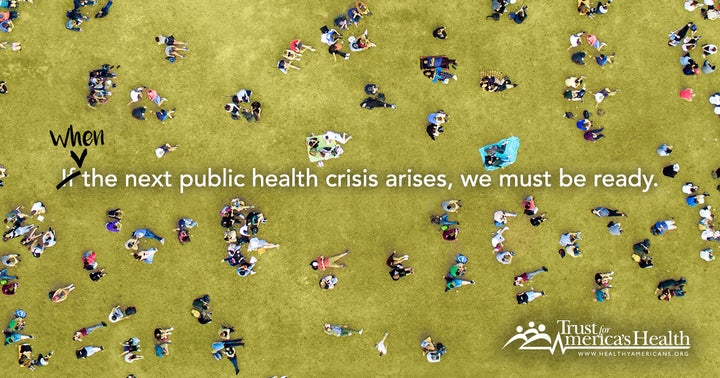Imagine a major disaster is threatening your community ― say the spread of a new and dangerous infectious disease or flood ― and the key to protecting your family’s health is the rapid intervention of skilled public health experts. But, those experts are hamstrung from mobilizing the response because they need Congress to first convene, put the item on their agenda, schedule lengthy debates and consider whether to fund the response at all.
This isn’t the plot of a disaster movie. Sadly, it is our current reality. In the last several years, we have had a number of emergency situations where cuts and delays in federal public health emergency funding cost lives, caused enormous suffering and resulted in exorbitant preventable medical costs.
To prepare for a myriad of public health emergencies, most of the work is done by full-time, year-round emergency preparedness experts supported with funding that reaches all levels—federal, state, large city and county public health agencies. This funding is key to responding to big and small emergencies.
I saw the impact of the lack of funding firsthand as health commissioner in Boston during 9/11 and the subsequent anthrax scare. This was before Congress had approved the core public health emergency funding. As a result, we had virtually no emergency infrastructure at that time-a major problem as we sent personnel to the site of the attack in New York City and responded to more than 1,000 local reports of suspicious powders and tens of thousands of panicked calls from the public.
After 9/11, core funding was made available and appropriate steps were taken to prevent or prepare for subsequent emergencies. With this consistent funding in place, public health was able to expertly respond and mitigate the H1N1 outbreak.
Unfortunately, the core public health emergency funding that arrived after 9/11 has been decreasing over the last several years even as the number of emergencies has increased.
In fact, federal funding—through what are known as Public Health Emergency Preparedness (PHEP) grants—that supports the Centers for Disease Control and Prevention (CDC) and states and localities has dropped by about a third - from $940 million in FY 2002 to $651 million in FY 2016. And, a complementary federal program that works to enhance healthcare system preparedness for emergencies has been cut in half - from a high of $515 million in fiscal year 2004 to just $255 million in FY 2016.
These cuts haven’t and can’t be filled by states or local communities. Most recently, 24 states reduced their public health funding and, overall, state public health funding is still below where it was prior to the recession.
While core funding is imperative, the nation also needs to create a public health emergency fund that can be drawn from in times of crisis.
Sadly, the funding needed in a large-scale, potentially catastrophic emergency has been increasingly stalled. This is most strikingly illustrated by the Zika response. It took 235 days for Congress to allocate additional resources to fight a dangerous disease. While waiting on funding, state and local public health departments admirably redirected important staff and resources from other priorities to do all they could. But, because they lacked specialized funding, thousands of pregnant women were at risk of exposure.
In President Trump’s FY 2018 budget there is mention of such a fund. However, there is concern it might be created by diverting core emergency preparedness dollars. This would be robbing Peter to pay Paul. Without the core funding, the special emergency funding could not possibly be well-utilized—if there is no infrastructure and training in place before a disaster, you can’t suddenly wish cast that to appear.
In reality, we need stable, adequate public health emergency preparedness funding restored to previous levels PAIRED WITH an emergency response fund that supports the time-sensitive mobilization against a major event or emergency.
We find ourselves at a crisis point. We can turn back to where we were before 9/11, or we can build the funding structures—both a consistent core public health budget and a specialized public health emergency contingency fund—necessary to ensure the nation will be ready and able to respond quickly and effectively.

